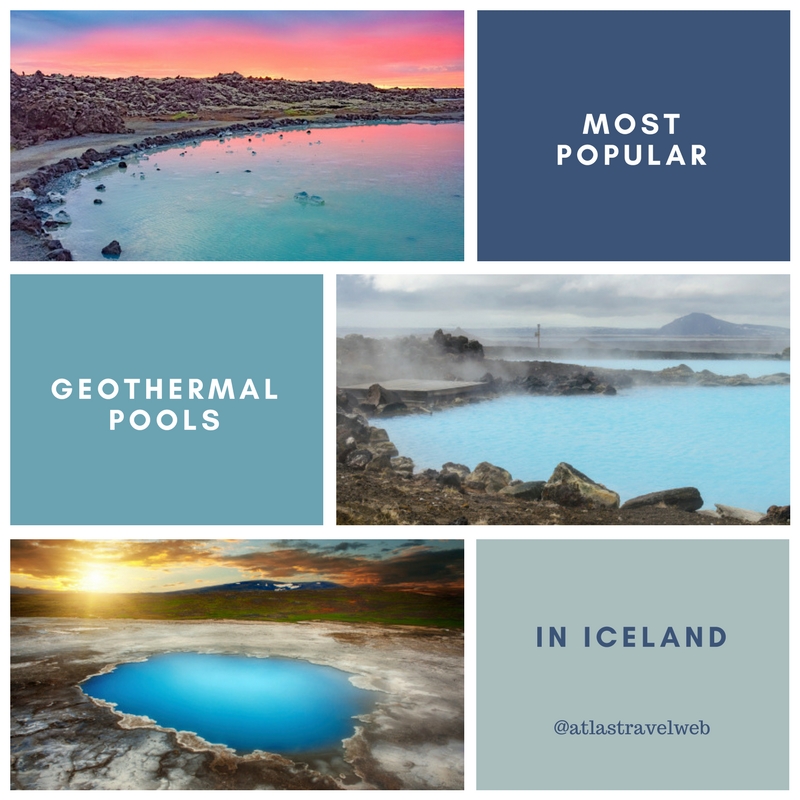
Most Popular Geothermal Pools and the Best Times to Visit
Iceland is known as a land of fire and ice, a remote island dotted with volcanoes and lava fields as well as massive glaciers. Because of Iceland's location on the ridge of two highly active tectonic plates, it is a world-famous hotspot for geothermal pools and spas. Iceland has numerous geothermal pools that have become one of its most popular and appealing attractions for tourism. With over 200 geothermal areas on the island, here are a few of the must-see geothermal pools during your trip to Iceland.
Blue Lagoon
Hands down, the most popular geothermal pool in Iceland is the Blue Lagoon. Even if you don't know much about Iceland, you've probably at some point seen the iconic image of the milky blue waters of Blue Lagoon amidst a backdrop of black lava rocks, steam rising up from the water. The Blue Lagoon is a wildly famous, large geothermal spa that boasts all sorts of amenities such as a swim-up bar, waterfalls, grottoes, and steam rooms, as well as on-site dining and hotel accommodations.
The water in Blue Lagoon gets its unique color from its rich mineral content, which is thought to provide all sorts of benefits to your skin and health. Each guest receives a complimentary silica mud mask to replenish your skin as you soak in the gorgeous setting for a truly relaxing, enchanting experience. Pro tip: if possible, schedule your visit to the Blue Lagoon right after your flight lands in Iceland. It is located less than 20 miles from the airport near ReykjaviÂk, and the soothing waters are the perfect remedy to a long flight. Early morning or late evening hours are less crowded times to visit this extremely popular geothermal spa.
Secret Lagoon
Don't let the name fool you: the Secret Lagoon is also one of the best-known and visited geothermal pools on the island. Its Icelandic name is Gamla Laugin, which translates to "the old swimming pool" and it is the oldest man-made geothermal pool in Iceland. Located within the famed Golden Circle, Iceland's most popular tourism circuit, the Secret Lagoon is also the largest natural geothermal pool on the island. Surrounded by lush green moss and idyllic scenery, this geothermal pool is situated near small bubbling geysers and a nearby river.
The water is naturally heated to a steamy 100-104 degrees Fahrenheit (38-40 degrees Celsius), and you can see the mist rising up over the water as you float around this relaxing geothermal pool. The Secret Lagoon offers limited amenities such as a bar and showering/changing facilities.
Laugarvatn Fontana
Also located in the popular Golden Circle route, Laugarvatn Fontana is a luxurious spa center featuring interconnected geothermal pools varying in size and temperature. The spa is built around the black sandy beaches of cool Lake Laugarvatn, and offers several amenities including steam baths heated by a natural hot spring and a sauna. There is an on-site restaurant that serves fresh, locally-sourced food, and you can even enjoy lava bread, which is traditional Icelandic rye bread baked from a hole dug in the hot black sand near the lake. Tip: You can take a tour of the geothermal bakery and sample fresh baked rye bread that has just been dug out of the sand. Laugarvatn Fontana is the perfect place to stop off and recharge and relax in the soothing waters during your busy trip around the Golden Circle.
Ma'vatn Nature Baths
For those who are looking for a less commercialized geothermal pool, the retreat at Ma'vatn offers all of the relaxation and beauty as some of the more popular spots, without the huge crowds. Located in northern Iceland with views of a glacier and lava fields, the Ma'vatn facility has a geothermal lagoon, as well as limited amenities, such as naturally heated steam baths, changing rooms, and a small restaurant and bar. In fact, many visitors prefer the secluded location of Ma'vatn over the bigger and more popular geothermal pools such as the Blue Lagoon.
Best Times to Visit
Geothermal Pools in Iceland
Iceland's climate is cold year-round, but the summer months offer generally warmer weather-- and with that, more crowds. To avoid the crowds (and get a better rate), the best time to travel to Iceland is during the low season, which lasts from October to May. This is especially true when visiting the geothermal pools in Iceland, as they stay warm all year long due to the high geothermal activity.
Another reason to schedule your
trip to Iceland during the low season is to get an opportunity to view the
natural wonder of the Northern Lights. Only visible during the
winter months, the Northern Lights can be viewed from many of Iceland's
geothermal pools-- so you can float in the warm waters as you take in the
glorious light show in the sky.
